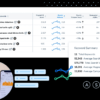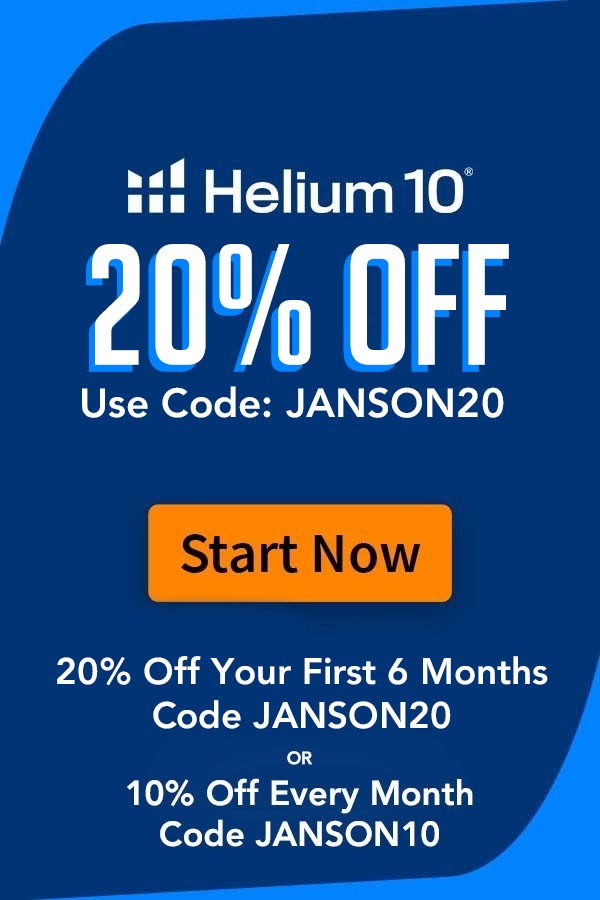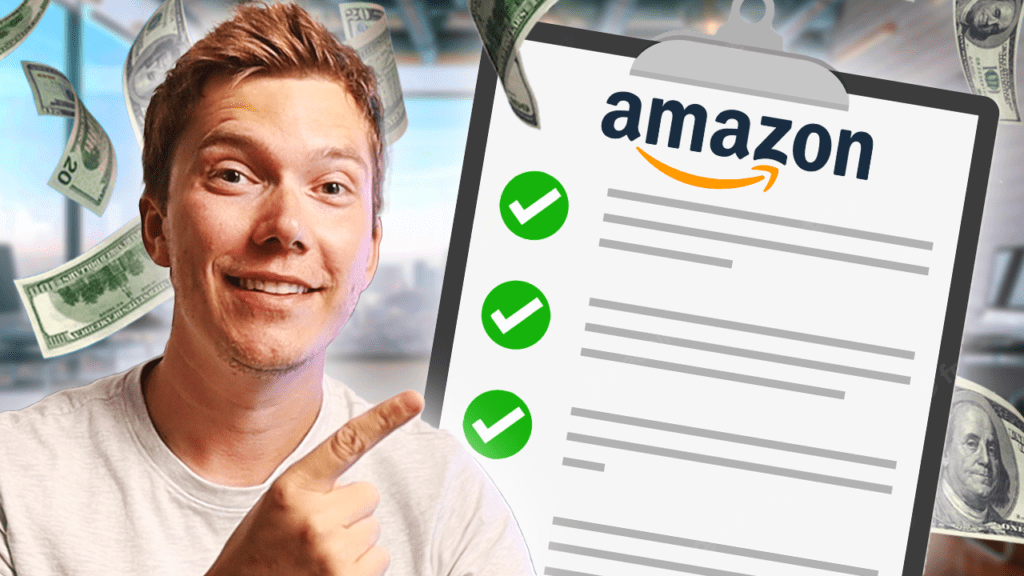
👉If you’d like to download my free “Amazon FBA for beginners” checklist, click here.
As an experienced Amazon FBA seller, I’m commonly asked by beginners “is Amazon FBA difficult?”, and my answer to that question is… no, it’s not difficult… as long as you know what you’re doing.

Getting to the point of being a profitable Amazon FBA seller requires dedication and following a lot of steps, which all need to be executed to the best of your ability. If you’re learning how to become a seller without any guidance whatsoever, then you’re probably going to find the process quite overwhelming at times, because you’re not going to know what order to do things in, or even what to do all together.
So, to increase your chances of success and to help stop you missing out any important steps of the process, I’m going to walk you through how to start Amazon FBA TODAY, using my “Amazon FBA for beginners” checklist. This should take you through all of the main action steps that you need to follow if you want to become a successful seller.
Whilst this isn’t going to make the process of becoming a seller as easy as if you were doing it with complete guidance, like with my mentor programme wink wink, it will certainly make things a lot easier than wandering around in the dark, doing it completely alone.
Step 1: Setting Up Your Business

First thing’s first, as soon as you’ve decided you want to earn stacks of cash being an Amazon FBA seller, you’re going to need to create a business. Most people choose the limited company route rather than the sole trader one, and that’s because it’s the more efficient method when it comes to extracting cash – i.e. you’ll be paying less tax.
Setting up a business can be pretty overwhelming if you haven’t got a financial or business background, so my advice is to speak with Osome, who are a digital accounting firm that specializes in working with Amazon FBA sellers.
Step 2: Getting A Business Bank Account
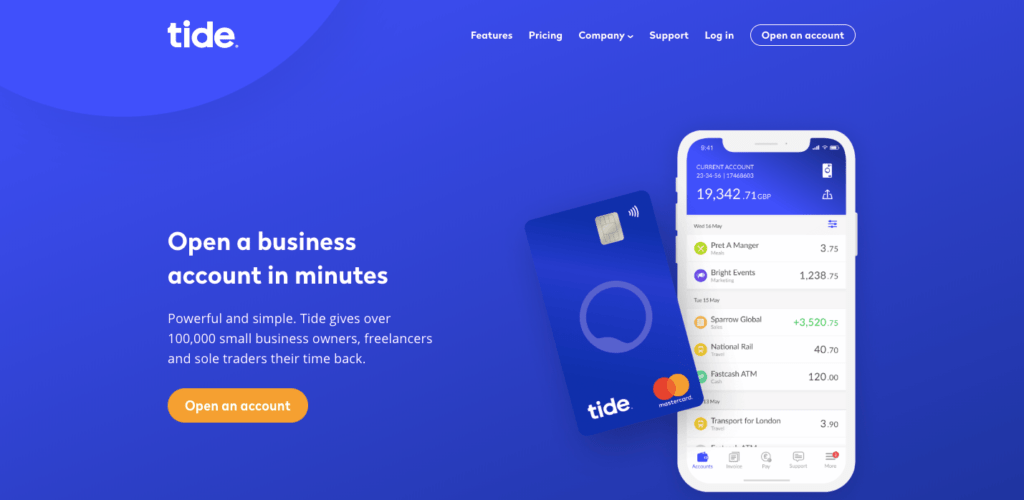
Once you’ve got your limited company setup – which shouldn’t take more than a few days, you’ll need a business bank account. All of the banks that you’ll find on the high street are accepted by Amazon, but will often have a slow application process. Instead, I’d recommend choosing a digital bank, such as Wise, Tide or Starling, all of which work with Amazon and should allow you to get your own account setup in a short amount of time.
You can click here for £50 free credit when you open a Tide account!
Step 3: Creating Your Amazon FBA Seller’s Account
As soon as you receive your business bank details and a debit card if applicable, you’ll need to create your Amazon Selling Account, which you can do by typing in ‘Seller Central Amazon’ on Google, followed by the country that you want to sell in.
When filling out the application form make sure that you triple check that all of the details are correct, because if they’re not, you’ll fail the verification checks and you’ll be stopped before you’ve even started.
Step 4: Finding A Product To Sell
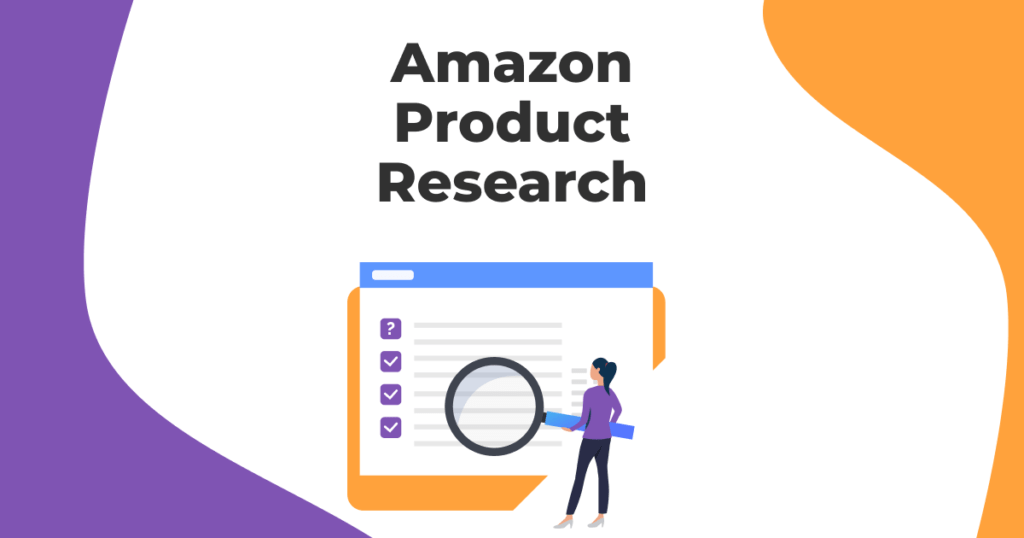
So that’s the boring admin side of your Amazon FBA business taken care of, next comes the fun part – product research, or finding a product to sell. There are tonnes of different ways to find Amazon FBA products to sell, and if you browse my Youtube you’ll see numerous tutorials that will give you lots of ideas of where to start.
In order to actually do your product research, you’ll need to make sure that you’ve got a laptop and a subscription to Helium 10, which is a brilliant suite of tools for Amazon FBA sellers that allows you to assess any product’s level of demand, and how much each seller is making. Here’s a 20% discount code for you!
Step 5: Verifying Key Selling Criteria
A general rule of thumb with any product niche that you come across, is that it needs to have:
1) revenue on average of 3x your monthly profit target
2) a profit margin of least 30% before ads, and
3) an opportunity for you to differentiate, i.e. stand out from the crowd in order to sell.
If you can find a niche that satisfies these 3 criteria as a minimum, then you’ve potentially got a product that’s going to generate you enough profit to be worth your while.
Additional verification steps that you’ll want to put any Amazon FBA product through before deciding to sell it are: checking that it’s not patent protected or an Amazno restricted product, it’s not seasonal or trending, it’s not in a saturated niche, and that it’s not something that’s likely to break easily or have a high fault rate.
If the product that you’ve found passes all of these checks, then you may well have a got a winner, so give yourself a pat on the back.
Step 6: Ordering Samples From A Supplier

After you’ve decided on the product that you want to sell on Amazon FBA, you’ll need to order and evaluate a sample from a trustworthy and reliable manufacturer that can be found on Ali Baba.
Remember to remove any emotion from the sample testing process, if the quality is poor and is unlikely to be loved by customers, bin the supplier and find somebody else. If their quality sucks too, then it could just be a product that generally is poor quality, so you’ll be better off looking for a different product opportunity all together rather than ordering a load of units that get bad reviews and then don’t sell.
Step 7: Create Your Amazon Product Listing
Provided the sample that you receive from your supplier is good quality, you’ll then need to create your product’s listing on Amazon. In order to do this, you’ll firstly need to purchase a barcode from GS1, or apply for what’s known as a GTIN exemption, which you can easily do by searching for the GTIN exemption application form on Amazon.
When writing your product’s listing on Amazon, remember that you should never just jam in relevant keywords for the sake of it – your title, bullet points and description all need to make complete sense, because at the end of the day it is going to be a human reading it and deciding If they want to buy from you. Think about the problems that your product solves and why the customer should choose you over your competition, and then write that down in a compelling but logical way. To help you understand the best keywords to include within your listing, use Helium 10’s keyword and listing optimisation tools.
For your images, you’ll either need to get a graphics designer from Fiverr that can piece something together using stock images and renders, or hire a local photographer that you’ve sourced online.
Step 8: Get Your Logo & Packaging Designed
Once you’ve told your supplier that you’re happy for them to go ahead and manufacture your goods for you, if you want to brand your product, get them to send them you the product’s packaging template and then hire a designer on Fiverr to make you a cool logo and box art.
This is a great way to stand out from the crowd, and it’s an essential step to take if you want to build a strong private label business that you can hopefully sell for millions in years to come. If you’re struggling for a brand name to give your product, you can use websites such as Namelix or any other brand name generator that you find on Google. To give yourself the best chances of success, try to think of a brand name that’s easy to spell, memorable and is English sounding.
Step 9: Pay Your Deposit & Create Your Amazon Shipping Plan
Typically as soon as you place an order for your Amazon FBA product with your supplier, they’ll request a deposit up front, which can range from 30-50%. If you’ve found the supplier on Ali Baba then you can pay with a credit or debit card, or a cheaper way is to do a bank transfer with Wise. Depending on the complexity of the product being made, the manufacturing part of the process should have completed within 2-3 weeks, at which point you should login to your Amazon seller account and create a shipment plan, which is where Amazon will give you the labels that need to be stuck on to each carton.
To help you fill out all of the boxes in the shipping plan, ask your supplier for what’s known as a packing list.
Step 10: Arrange Shipment Of Your Product!

Following that, you’ll need to arrange the shipment of your product, which you can do through your supplier or a freight forwarder.
Depending on whether you choose to ship by air or sea, your product should arrive at Amazon’s warehouse within 2-6 weeks, and once it does, you’ll be very close to becoming a fully fledged seller.
Step 11: Get Some Amazon FBA Reviews For Your Product
Before you do start officially selling to customers though, you’ll need to double check your listing makes sense, and then subtly get a couple of distant friends to buy the product and leave a review. This isn’t allowed by Amazon and it’s not an essential step to take by any means, but if you do want to do it to help your conversion, make sure you ask people who don’t regularly go to your house.
Step 12: Start Advertising & Selling!
If you want to increase the amount of sales that you make as quickly as possible, then you’ll need to make use of advertising on Amazon, which uses the Pay Per click system – i.e. you’re only charged each time a customer clicks on your listing. If you’re new to advertising on Amazon and you’ve never experienced PPC before, my advice is to create an automatic campaign only, but if you’re a bit more advanced then you can start to look at the more advanced manual campaign type.
Start with a modest budget of £10 or $10 per day, and don’t forget to review your campaign’s performance each day by reviewing the keywords that are getting you the most clicks. If they’re irrelevant or costing too much, then you can remove them from your campaigns so you don’t get charged for them anymore.
Step 13: Keep On Top Of Your Amazon FBA Profits
Keeping on top of your Amazon business’ profitability is an incredibly important step to take, so make sure that you review how much profit you’re making each day and take appropriate actions if it’s not enough. I use the Shopkeeper tool to tell me how much profit I’m making, which means that I don’t have to mess about with calculators or guesstimate whether I’m making or losing money – I simply load up the phone app and can then see how much I’ve made to the penny, which takes no effort at all.
Here’s a 30 days free trial of Shopkeeper!
FINISHED!
And THAT, is pretty much a list of all of the essential steps that you simply can not afford to miss when creating an Amazon FBA business. Whilst it might seem like a lot to take in and quite difficult to follow, trust me, once you’ve gone through the process once you’ll question what you found hard in the first place. To help increase the chances of you guys smashing it the first time round, you can download my Amazon seller checklist for free, by clicking here
So download it, print it, and then tick each item off as you complete it, and before you know it, you’ll be a top performing Amazon seller.
If you want to learn more about how you can do the same with your own Amazon FBA business, then check out my free training where I run through my exact 5 step strategy that I’ve repeatedly followed to continue launching successful products.
Or, if you’re ready to begin your journey and want to start with the best chances of success, check out the Smashers Academy.
P.s. if you want to learn more about my journey (highs and lows), check out my Amazon FBA review here.
I hope you’ve enjoyed this article, let me know how you get on!!



